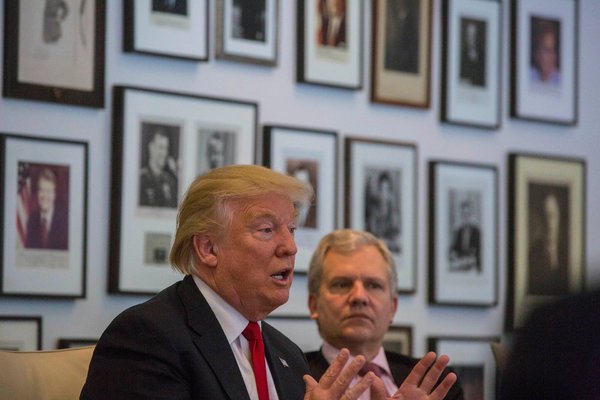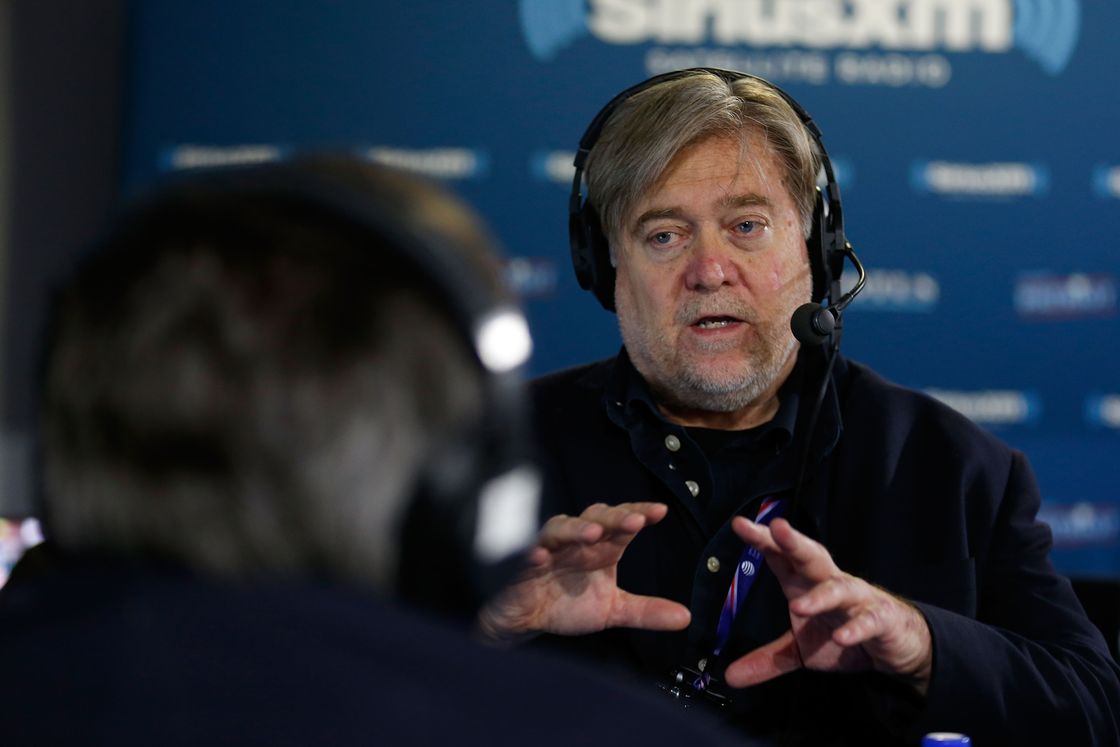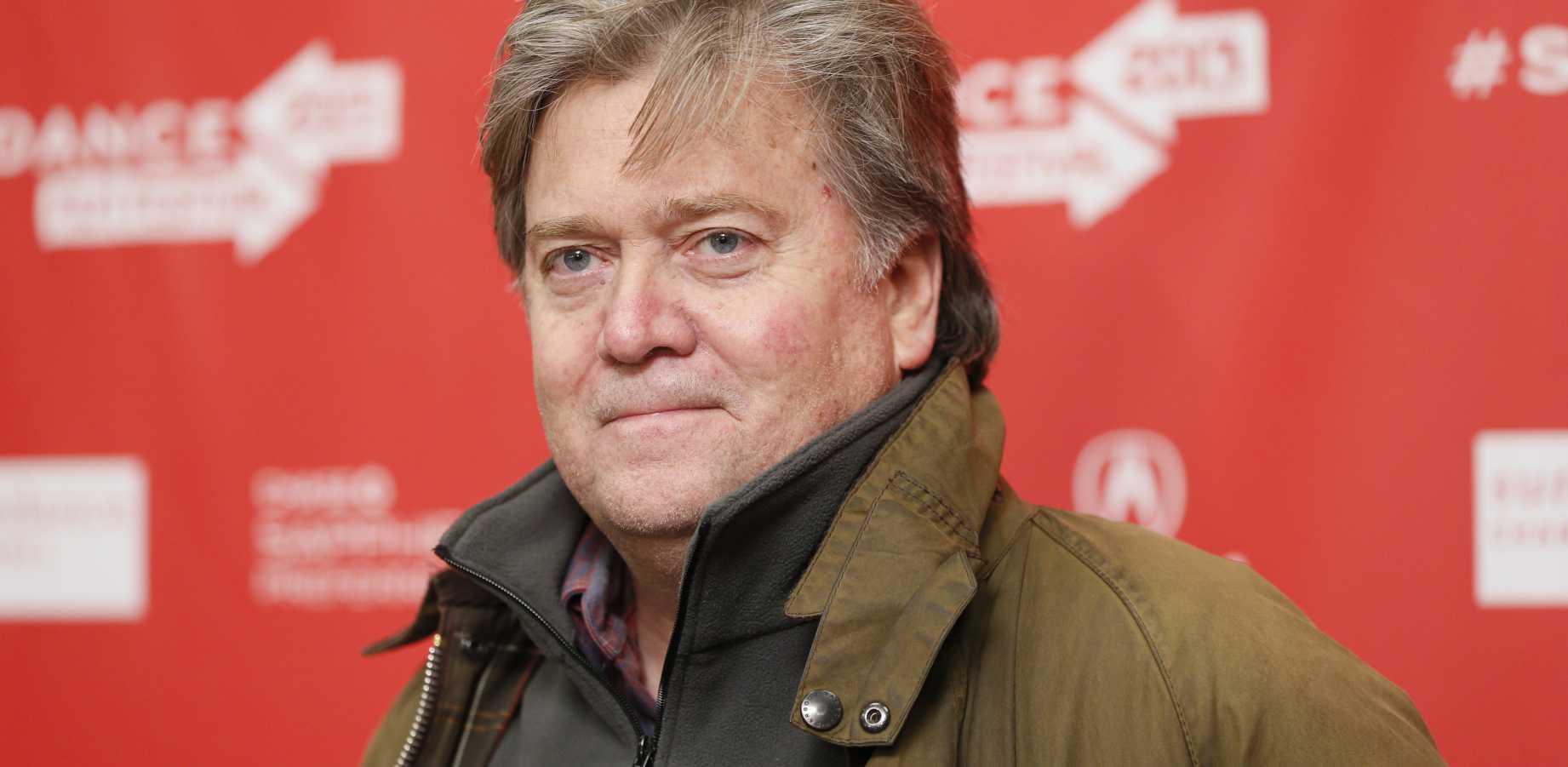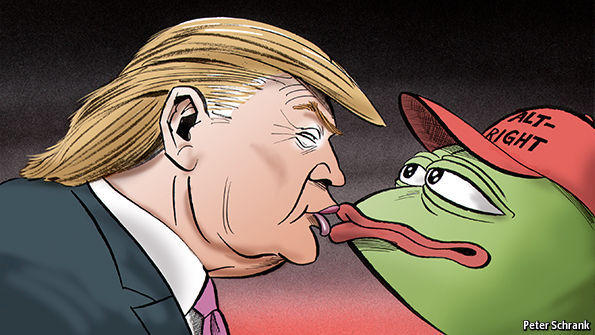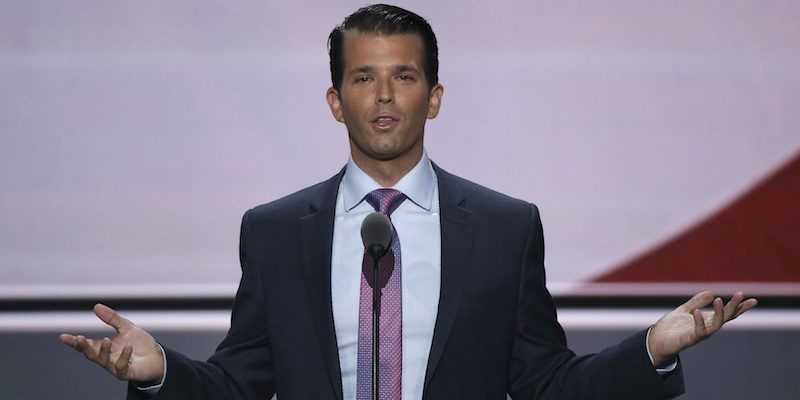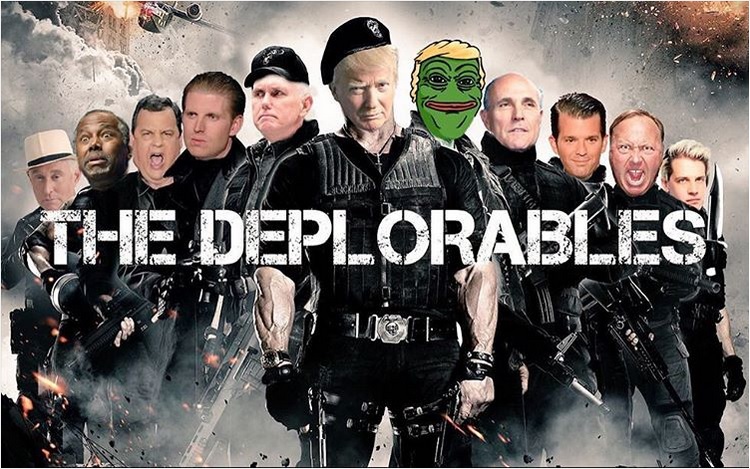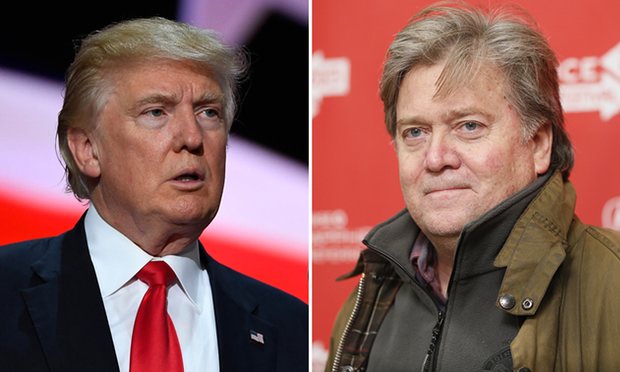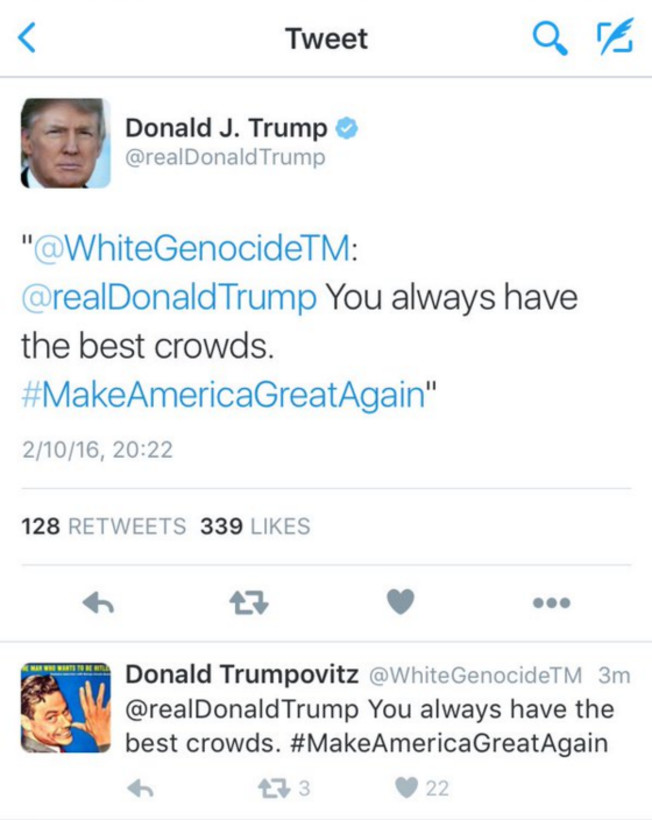Donald J. Trump named as his new campaign chief on Wednesday a conservative media provocateur whose news organization regularly attacks the Republican Party establishment, savages Hillary Clinton and encourages Mr. Trump’s most pugilistic instincts.
Mr. Trump’s decision to make Stephen K. Bannon, chairman of the Breitbart News website, his campaign’s chief executive was a defiant rejection of efforts by longtime Republican hands to wean him from the bombast and racially charged speech that helped propel him to the nomination but now threaten his candidacy by alienating the moderate voters who typically decide the presidency.
It also formally completed a merger between the most strident elements of the conservative news media and Mr. Trump’s campaign, which was incubated and fostered in their boisterous coverage of his rise.
Mr. Bannon was appointed a day after the recently ousted Fox News chairman, Roger Ailes, emerged in an advisory role with Mr. Trump. It was not lost on Republicans in Washington that two news executives whose outlets had fueled the anti-establishment rebellion that bedeviled congressional leaders and set the stage for Mr. Trump’s nomination were now directly guiding the party’s presidential message and strategy.
Mr. Bannon’s most recent crusade was his failed attempt to oust the House speaker, Paul D. Ryan, in this month’s primary, making his new role atop the Trump campaign particularly provocative toward Republican leaders in Washington.
Party veterans responded Wednesday with a mix of anger about the damage they saw Mr. Trump doing to their party’s reputation and gallows humor about his apparent inability, or unwillingness, to run a credible presidential campaign in a year that once appeared promising.
“If Trump were actually trying to antagonize supporters and antagonize new, reachable supporters, what exactly would he be doing differently?” asked Dan Senor, a longtime Republican strategist who advised Mitt Romney and his running mate, Mr. Ryan, in 2012.
Terry Sullivan, who ran Senator Marco Rubio’s presidential campaign, said Mr. Trump and Breitbart “both play to the lowest common denominator of people’s fears. It’s a match made in heaven.”
For Mr. Trump, though, bringing in Mr. Bannon was the political equivalent of ordering comfort food. Only last week, Mr. Trump publicly expressed ambivalence about modifying his style. “I think I may do better the other way,” he told Time magazine. “They would like to see it be a little bit different, a little more modified. I don’t like to modify.”
Mr. Bannon’s transition from mischief-maker at Breitbart to the inner circle of the de facto leader of the Republican Party capped the second shake-up of Mr. Trump’s campaign in two months.
Kellyanne Conway, a veteran pollster and strategist who was already advising Mr. Trump, will become his campaign manager and is expected to travel with the candidate, filling a void that opened up when Corey Lewandowski was fired on June 20.
Mr. Trump’s loyalists put the best possible face on the changes announced Wednesday, but their timing, after a New York Times article detailing his advisers’ frustration at trying to impose discipline on him, underscored why so many in the party have soured on his prospects: His decisions are often made in reaction to news coverage.
Paul Manafort, the campaign chairman, will retain his title and focus on the political shop but was widely seen as being sidelined: Mr. Bannon and Ms. Conway have both developed close relationships with Mr. Trump, and Mr. Bannon is likely to be more amenable to letting him run the sort of media-focused campaign he prefers.
“This is an exciting day for Team Trump,” Mr. Manafort wrote in an internal staff memo. “I remain the campaign chairman and chief strategist, providing the big-picture, long-range campaign vision,” he added.
On a conference call Wednesday morning, Jason Miller, a Trump spokesman, said the moves had been well received, along with a speech on crime reduction that he gave in Wisconsin, pointing to favorable coverage on the MSNBC show “Morning Joe.”
Under Mr. Bannon, Breitbart News has been an amen corner for Mr. Trump, and perhaps more relentless than any other conservative outlet in its criticism of the Republican establishment.
But what most distresses mainstream party strategists about the union of Mr. Trump’s campaign with Breitbart’s guiding vision is the brand of populism that the website has advocated, and that Mr. Trump has championed.
Mr. Bannon has overseen a site that is focused primarily on pushing Republicans away from what it calls a globalist agenda and toward a hard-line and often overtly racial one, railing against what it sees as the threats of free trade, Hispanic migration and Islamist terrorism.
“This is Trump going back to the nativism and nationalism that fueled his rise in the primary,” said Lanhee J. Chen, who was Mr. Romney’s policy director in 2012. “But it’s very dangerous to the future of the party because it only further narrows the appeal of a party whose appeal was already narrow going into this cycle.”
Mr. Chen called Mr. Trump’s shift “a base reinforcement strategy” and noted that it was very different from the tack of most party nominees, who use the final months of the presidential race to broaden their appeal in hopes of winning over the maximum number of voters.
But to those on the right who are hoping to permanently shift Republicans away from free-market conservatism and toward a harder-edged populism, the addition of Mr. Bannon was a victory for the “America First” approach they want to ingrain in the party.
“He doesn’t need any help formulating his message — his message is perfect,” the conservative author Ann Coulter said of Mr. Trump. Referring to Mr. Trump’s policy adviser, speechwriter and warm-up speaker, she added, “Maybe he could use 10 more Stephen Millers.”
As comfortable as Mr. Trump may feel with Mr. Bannon’s style of politics, their unconventional alliance, and the possibility that the coming weeks could resemble a conservative publicity tour more than a conventional White House run, fueled speculation that Mr. Trump was already looking past November.
In recent months, Mr. Trump and his son-in-law, Jared Kushner, have quietly explored becoming involved with a media holding, either by investing in one or by taking one over, according to a person close to Mr. Trump who was briefed on those discussions.
At a minimum, the campaign’s homestretch offers Mr. Trump, who has begun to limit his national media appearances to conservative outlets, an opportunity to build his audience and steer his followers toward the combative Breitbart site. Even before announcing the staff shake-up, Mr. Trump intensified his criticism of the mainstream news media in a speech on Tuesday night in which he declared that he was running against the “media-donor-political complex.”
Mr. Trump’s elevation of Mr. Bannon and Ms. Conway also highlights the growing influence of Robert Mercer and his daughter Rebekah, conservative donors from Long Island. The Mercers are investors in Breitbart, and their foundation funds a host of other conservative activist groups. They spent millions on Senator Ted Cruz’s behalf during the Republican primary, an effort Ms. Conway helped lead. And they began bankrolling a pro-Trump “super PAC” in recent weeks after becoming friendly with Mr. Trump, his daughter Ivanka and her husband, Mr. Kushner.
At Breitbart and its sister foundation, the Government Accountability Institute, Mr. Bannon ran a hybrid between a news organization and an opposition-research operation aimed at discrediting Mrs. Clinton. The institute sponsored a book about Mrs. Clinton’s financial entanglements, “Clinton Cash,” which spawned various articles in mainstream newspapers last year, including in The New York Times.
Rival conservative news organizations viewed Breitbart as something of an outlier, which was evident in the title of an article the Weekly Standard writer Stephen F. Hayes wrote on Wednesday: “Trump Has Decided to Live in Breitbart’s Alternative Reality.”
“It’s the merger of the Trump campaign with the kooky right,” William Kristol, editor of The Weekly Standard, said of Mr. Bannon’s new role.
Mr. Bannon has now joined with Mr. Ailes in a common cause on Mr. Trump’s behalf, a mission that Breitbart never pretended to deny. But Mr. Ailes’s direct involvement casts a new light on how his network handled Mr. Trump’s candidacy.
In the weeks before the Fox News host Gretchen Carlson filed the sexual harassment lawsuit that led to Mr. Ailes’s forced resignation, Mr. Ailes had been in regular contact with Mr. Trump and met with him at least twice, people briefed on the sessions said.
While meetings between a presidential candidate and the chairman of an influential television network are hardly unheard-of, especially with Mr. Trump, Mr. Ailes’s direct involvement in the campaign raises new questions about whether the sessions involved more than the usual complaints about coverage.
Before Mr. Ailes’s ouster, some of the network’s journalists and contributors privately complained that Mr. Ailes was pushing them to be more supportive of Mr. Trump. This drew particular umbrage from longtime Republican staff members and contributors who either opposed Mr. Trump’s candidacy on ideological grounds or believed it demanded tough reporting on journalistic grounds.
There was, though, one prominent conservative voice unambiguously in Mr. Ailes’s corner since the beginning of the sexual harassment scandal: Breitbart.
The website emerged as a singular defender of Mr. Ailes, with a piece about a planned walkout by network stars loyal to him should he be forced out — it never came to pass — and one by Mr. Bannon ridiculing the “minor Murdochs” (the 21st Century Fox chief Rupert Murdoch’s sons and co-executives, James and Lachlan), who were seen as leading the push for Mr. Ailes to resign.
(h/t New York Times)
